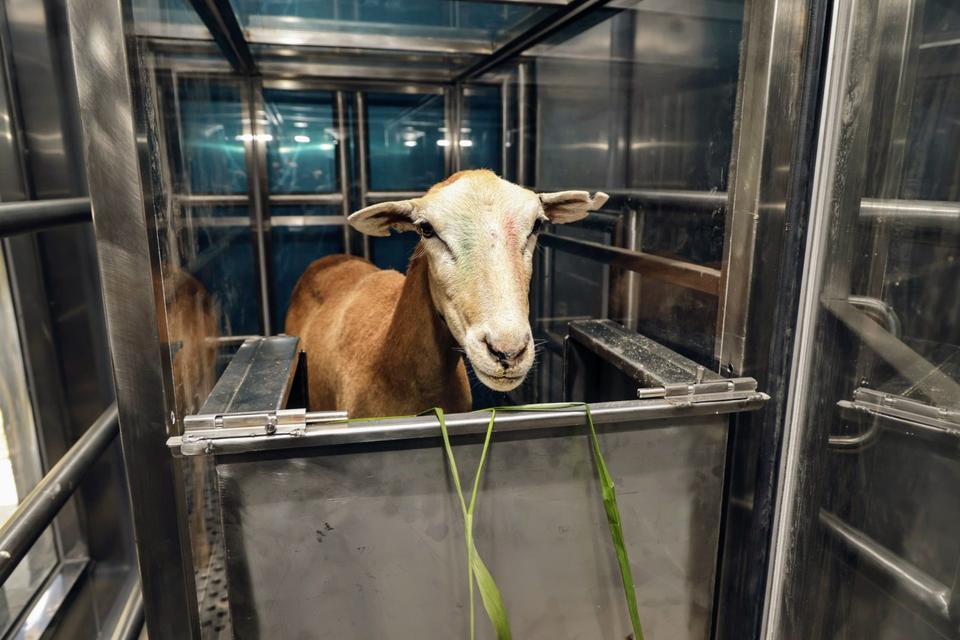Measuring livestock's methane emissions with minimal disturbance and maximum ease
- From
-
Published on
05.11.24
- Impact Area

Methane (CH4) is a super pollutant gas that is roughly 80 times more potent than carbon dioxide (CO2) over a 20-year period, making it a major contributor to global warming. However, unlike CO2 (which can remain in the atmosphere for centuries) methane only remains for approximately a decade. This means that cutting methane emissions offers the quickest and most impactful way to reduce warming.
One of the key challenges to cutting methane emissions is accurately measuring and monitoring them across diverse sources and environments, without having to follow a cow all day with an uncomfortable portable meter that not only consumes time, but also stresses the animal. Instead of bringing the laboratory to the field, why not bring the field to the laboratory? This isn’t a regular laboratory, but a specially designed research facility that prioritizes animal welfare, allowing cows or sheep to continue their daily activities (eating, resting, and of course, burping) while a machine known as a respirometry chamber measures the amount of gas each animal emits, transmitting that data directly to the scientists’ computer next to the chamber.
Respirometry chambers are widely regarded as the gold standard method for measuring methane emissions from livestock. Their ability to continuously monitor an animal’s metabolism and provide accurate real-time data on gas exchange makes them the most reliable tool for quantifying carbon dioxide and methane emissions from livestock, offering an unmatched level of precision and comfort.
By closely tracking how much methane livestock produce, researchers can better understand how different forages, feeding methods and livestock management practices affect quantities of greenhouse gases emitted. These data are also essential for policymakers to develop strategies that align with global climate goals without compromising livestock productivity.
This is where research and innovation come into play. The establishment of respirometry chambers at the Alliance’s research campus in Palmira, Colombia represents a crucial step in supporting countries from the Global South with their national commitments of reducing greenhouse gas emissions by 2030 through their Nationally Determined Contributions (NDCs) under the United Nations Framework Convention on Climate Change (UNFCCC). These NDCs reflect each country’s efforts to lower national emissions and adapt to the impacts of climate change, with emissions from the livestock sector being critical.
Related news
-

Mapping for Resilience: How Spatial Data is Transforming Karamoja Cluster
Ibukun Taiwo02.07.25-
Climate adaptation & mitigation
Pastoral communities in the Karamoja Cluster (a region spanning Kenya, Uganda, South Sudan, and Ethi…
Read more -
-

Building Resilience and Regeneration: The Central Highlands Ecoregion Foodscape (CHEF)
Sehlule Muzata02.07.25-
Climate adaptation & mitigation
At the CGIAR Sustainable Farming Program (SFP), we believe that collaboration is essential for trans…
Read more -
-

Planting with Precision: How Weather and Climate Information is Changing Bean Farming in Rwanda
The Alliance of Bioversity International and the International Center for Tropical Agriculture (CIAT)01.07.25-
Climate adaptation & mitigation
Imagine weather information as a GPS for farmers. Without it, the journey becomes uncertain, filled…
Read more -
